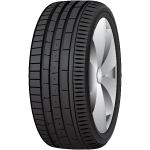
- If you plan to use snow tires, have them installed in the fall so you are prepared before it snows. Check out nhtsa.gov/tires for tire ratings before buying new ones and look for winter tires with the snowflake symbol.
- Regardless of season, inspect your tires at least once a month and before long road trips. It only takes about five minutes. If you find yourself driving under less-than-optimal road conditions this winter, you’ll be glad you took the time. Don’t forget to check your spare tire.
- As the outside temperature drops, so does tire inflation pressure. Make sure each tire is filled to the vehicle manufacturer’s recommended inflation pressure, which is listed in your owner’s manual and on a placard located on the driver’s side door frame. The correct pressure is NOT the number listed on the tire. Be sure to check tires when they are cold, which means the car hasn’t been driven for at least 3 hours.
- Look closely at your tread and replace tires that have uneven wear or insufficient tread. Tread should be at least 2/32 of an inch or greater on all tires.
- Check the age of each tire. Some vehicle manufacturers recommend that tires be replaced every six years regardless of use, but check your owner’s manual to find out.
- For more information on tire safety, visit NHTSA’s Tires page.
For additional tips check:
